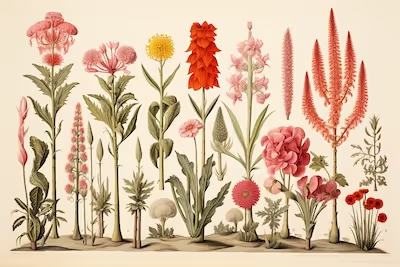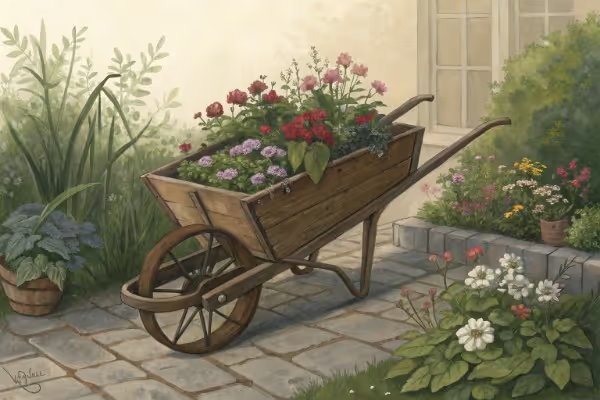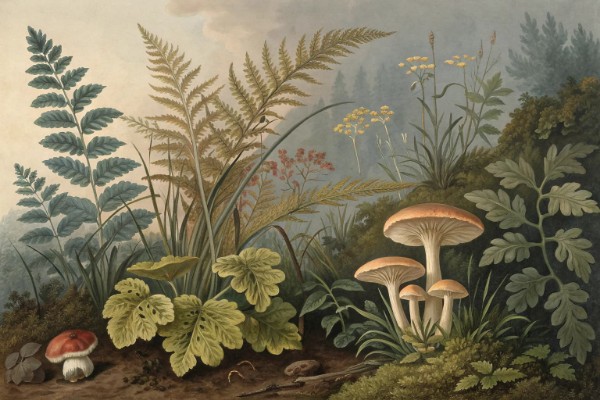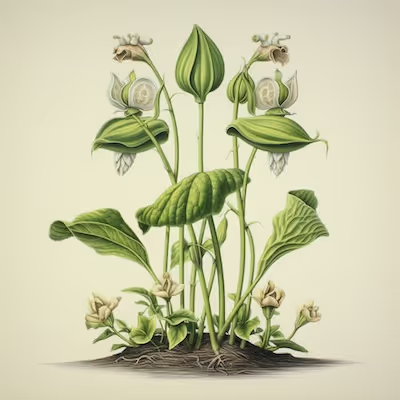Gardening Gadgets That Bring Technology to Your Flower Beds
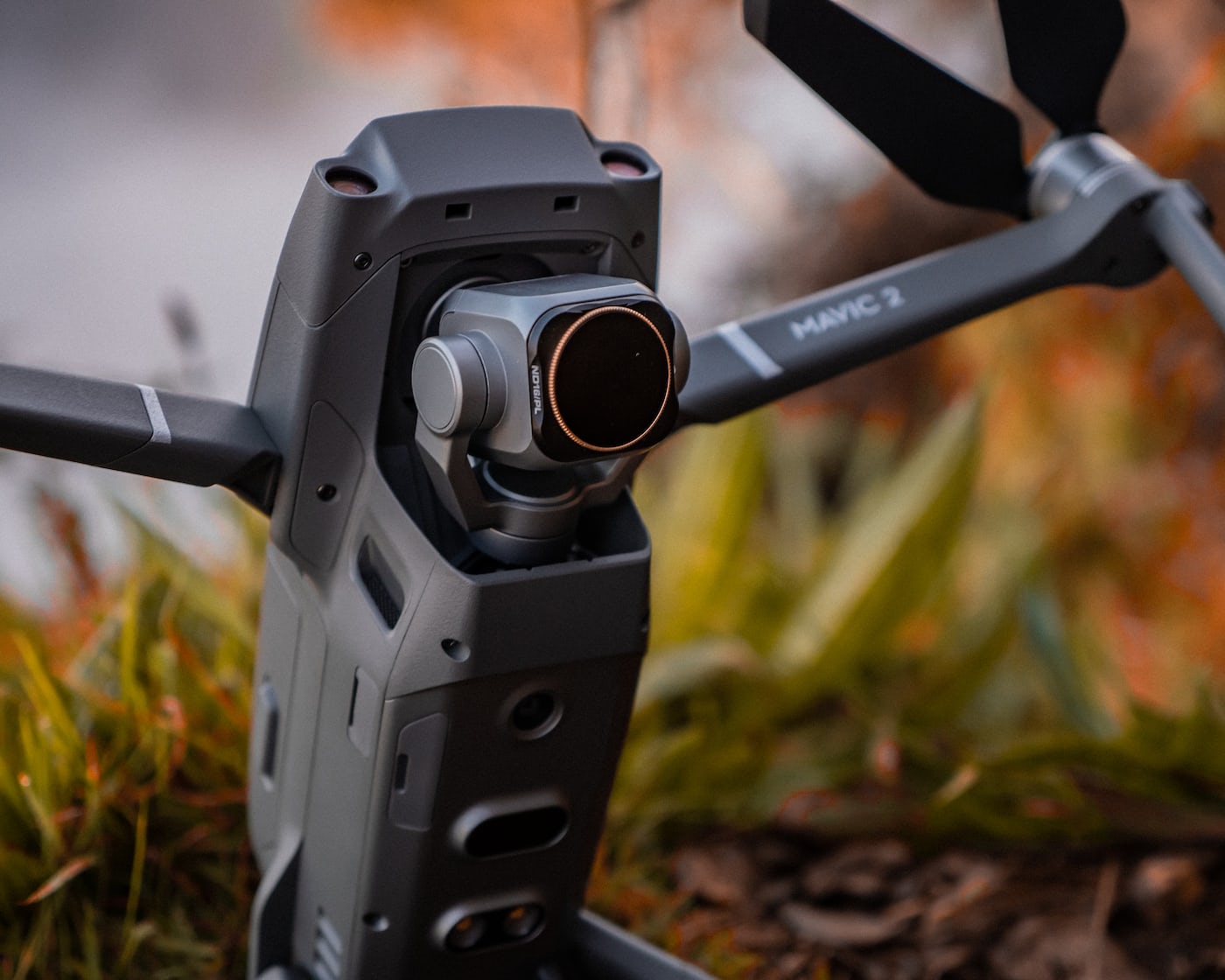
Gardening Gadgets
Spruce up your garden game by integrating smart gardening gadgets that track soil moisture, automate watering, and monitor plant health—all from your smartphone. Studies show gardens using gardening gadgets lower water use by 30%, boost crop yields, and slash time spent on garden chores. Ready to reclaim your weekends and kick garden guesswork to the compost pile? Here's how tech can make your patch flourish effortlessly.
Cheatsheet: Tech Tools for Smart Flower Beds
🛠️ Tools and Products You'll Need
- Soil sensors (moisture, pH, nutrient level)
- Automated drip irrigation kit
- Smart weather station
- Plant health scanner (app-enabled)
- Solar-powered garden lights
- Bluetooth garden thermometer
- Wireless timers
🌡️ Climate Control
- Track temp: 60-80°F / 15-27°C optimal for most flowers
- Smart sensors help prevent heat stress or frost
- Automate ventilation in greenhouses
💧 Watering Precision
- Soil moisture probes cut water use by 30%
- App-controlled timers sync with weather predictions
- Drip systems target roots, reduce mildew risk
🧪 Soil Health Monitoring
- Test pH: 6.0-7.0 (roses, tulips); use sensors for instant feedback
- Bluetooth testers detect deficiencies for quick fixes
- Boost nutrient density in edible flowers
📱 Disease & Pest Management
- Plant scanners spot early stress (leaf spots, pests)
- Integrated cameras compare to 100,000+ disease images
- Alerts reduce crop loss, limit pesticide use
🔋 Power From the Sun
- Solar lights illuminate without wires
- Solar-powered pumps run eco-friendly water features
🏡 Data-Driven Design
- Apps track bloom times for pollinator support
- Monitor air quality—improve garden's health benefit
- Custom reports guide replanting, feeding, pruning
🚀 Steps to Smart Gardening
- Install soil sensors every 12-24 in / 30-60 cm for best coverage.
- Sync devices with mobile apps before use.
- Set watering schedules based on sensor & weather data.
- Scan plants weekly for health or pest changes.
- Review data monthly, adjust care for maximum growth & nutrition.
Gardening Gadgets That Bring Technology to Your Flower Beds
I test gear in real beds with real mud, then keep only what survives rain, sun, and my impatience. Some gadgets earn permanent spots in my tool tote.
Soil sees the truth: sensors that actually help
Soil moisture sensors cut through guesswork by reading the root zone instead of your knuckle. Capacitance probes are affordable, while TDR models cost more and drift less over time.
Place sensors at two depths, 4 to 6 inches and 8 to 10 inches, so shallow bloomers and deep drinkers both get a say. I log readings weekly, then adjust irrigation by zone, not by vibe.
Pro tip: salinity skews readings, so rinse probes in distilled water and recalibrate monthly if your fertilizer mix runs salty. Keep them out of the dripline trench, or the data skews wet.
EPA WaterSense reports that weather-based irrigation controllers can shave about 15 percent off outdoor water use, often thousands of gallons per home per year. Source: U.S. EPA WaterSense.
What I buy and why
- Stainless-steel electrodes, replaceable tips, and IP65 or better weatherproofing.
- Simple data export, CSV over locked formats, because I want my numbers portable.
- Two sensors per zone over one sensor for the whole yard, since shade lies.
Smart irrigation that waters plants, not pavement
Smart hose timers with flow meters tell you gallons used, which beats guessing. Weather-based controllers skip cycles after rain and lengthen them during heat waves.
I run soil sensors as a “bypass,” so watering only happens if the bed is dry and the forecast agrees. It turns irrigation into a check and balance, not a faith exercise.
Outdoor water use averages nearly 30 percent of household use in the U.S., and in dry regions it can top 60 percent. Source: U.S. EPA WaterSense.
Field notes on setup
- Set run times by soil, not plant label, loam needs fewer minutes than sand.
- Use matched precipitation rate nozzles so one corner does not drown the violas.
- Test your flow sensor each season by filling a 5 gal, 19 L bucket and comparing readings.
Light measurement your eyes will never give you
PAR meters measure photosynthetically active radiation, which plants actually use, 400 to 700 nm. Full sun at noon often hits 1500 to 2000 µmol m−2 s−1, but most ornamentals thrive on far less.
Target a daily light integral, DLI, that matches the plant, 10 to 15 mol m−2 d−1 for shade lovers, 20 to 30 for sun annuals. I map beds in May and August, then pick plants that fit the site rather than bullying the site to fit plants.
On a budget, I’ll use a calibrated phone app with a diffuser and accept a 10 to 20 percent error. I care about relative differences across the bed more than lab-grade precision.
Fertility tools that prevent mystery problems
pH meters earn their keep during spring prep and after heavy rains. Calibrate with fresh 7.00 and 4.00 buffers, store the glass bulb wet, and avoid heat above 122 F, 50 C.
EC meters show fertilizer strength in mS per cm, a simple guardrail against petunia burn or lackluster dahlias. For containers, I feed at 1.2 to 2.0 mS per cm and watch leachate if tips brown.
Most garden plants take up nutrients best between pH 6.0 and 7.5. Source: Royal Horticultural Society.
Compost that actually cooks
Wireless compost probes and long-stem thermometers tell me when to turn, not my nose. I aim for 131 to 160 F, 55 to 71 C, then flip the pile when it slides below 120 F, 49 C.
For pathogen reduction, maintain 131 F, 55 C, for at least three consecutive days in a static pile, with turning protocols for windrows. Source: USDA composting guidance.
Frost, heat, and microclimate watchers
I park small Bluetooth loggers at plant height, shaded in a simple radiation shield. Frost alerts at 34 F, 1 C, have bought me multiple rose flushes and spared new echinacea more than once.
Summer heat spikes tell me which beds need early morning watering to blunt midday wilt. One courtyard bed reads 4 F, 2 C, hotter than the lawn on still days, so it gets mulch first.
Pest scouting goes digital without getting fussy
Clip‑on phone microscopes at 60x reveal spider mite stippling and thrips where the naked eye shrugs. I pair that with yellow and blue sticky cards dated with a paint pen, then I act on trends, not drama.
Motion cameras near beds catch night grazers that footprints miss. Skunks leave U-shaped divots, rabbits leave clean bites, and a camera closes debate fast.
Integrated pest management starts with monitoring, then choosing the least toxic effective tactic. Source: University of California Statewide IPM Program.
Robots and power tools that actually earn space
Battery pruners make deadheading roses painless in July when stems get woody. A compact unit with a safety trigger saves wrists without chewing through fine canes.
Cordless backpack sprayers deliver even droplets, about 200 to 400 microns, which means better leaf coverage and fewer repeats. For mass bulb planting, a drill with a bulb auger bores tidy holes in loam and saves backs.
Design meets data without killing the romance
I tag plants with QR codes that link to my notes, cultivar, source, bloom window, and feeding schedule. When a bed hits, I can repeat it on the shady side of the yard with tweaks instead of guesswork.
Flow meter logs correlate with bloom quality in my long border, more water the week buds set, less once petals drop. It reads like a baker’s notebook, simple and useful.
Top picks by goal and budget
- Water savings: smart hose timer with flow meter, add a rain gauge and one soil sensor per zone.
- Light mapping: phone app with diffuser for quick scans, a PAR meter if you design full-sun borders often.
- Soil chemistry: mid-range pH pen with fresh buffers, plus an EC pen if you fertilize containers.
- Microclimate: two to four Bluetooth temp or temp‑RH loggers with alerts for frost and heat spikes.
- Compost: 20 to 36 inch, 50 to 90 cm, thermometer or a wireless probe if you compost year-round.
- Labor savers: compact battery pruner, cordless sprayer, and a drill‑powered bulb auger.
Buyer cues that signal quality
- Ingress protection, IP rating, of IP65 or higher for outdoor electronics.
- Replaceable batteries and parts, no sealed throwaways.
- Calibration access with standard solutions, not mystery one-button claims.
- Clear documentation, decent support, and spare probes or seals available to order.
- Open data export so your years of logs do not vanish with an app update.
Common gotchas and how I dodge them
- One zone, mixed sun and shade, always overwaters the shade. Split by exposure or use separate schedules.
- Soil sensors pushed against a rock read dry forever. Wiggle a pilot hole, then insert.
- PAR spikes under dappled trees fool quick readings. Average over 15 minutes or measure DLI.
- pH pens that dry out drift wildly. Keep the cap wet with storage solution, not tap water.
- Bluetooth range collapses through brick. Place hubs near beds or pull logs during weekly rounds.
What the numbers look like in actual beds
After a smart timer plus flow meter install, my July water use in the perennial border dropped 22 percent, 1,900 gal, about 7,200 L, versus a three-year average. Bloom count held steady, and mildew pressure eased when watering shifted to pre-dawn.
Switching from guesswork to EC for container feeds cut tip burn on calibrachoa to zero in August. The meter paid for itself in one season of plants I did not stress into the bin.
Quick glossary for fast decisions
- PAR: plant-usable light, 400 to 700 nm, measured as PPFD.
- DLI: the day’s total light, mol m−2 d−1, a better predictor of flower performance than “full sun” on a tag.
- EC: fertilizer strength, mS per cm, higher is stronger.
- IP rating: dust and water resistance, higher numbers survive sprinklers and storms.

Want smarter plant choices? 🪴
Frequently Asked Questions About Gardening Gadgets
What gardening gadgets effectively monitor plant health?
Consider gadgets like soil moisture sensors and smart plant monitors. These helpful devices track moisture, nutrient levels, and sunlight exposure in real-time, alerting you to adjustments your plants might require. They're particularly beneficial for sensitive plants or gardens requiring precise conditions.
How accurate are digital soil testers compared to traditional methods?
Digital soil testers deliver swift and reliable results, often within seconds. While laboratory analysis offers detailed insights, digital testers efficiently measure pH, moisture, and nutrient availability, providing accurate guidance for home garden maintenance.
Can smart irrigation systems reduce water usage significantly?
Yes, smart irrigation systems adjust watering schedules based on real-time weather, soil moisture levels, and plant types. By automating these adjustments, gardens typically experience water usage reductions between 30% and 50%, promoting sustainability without sacrificing plant health.
Do automated garden sensors require extensive setup?
No, setup for most automated garden sensors remains straightforward, typically requiring minimal effort. After initial installation and configuration through a smartphone app, these devices operate independently, providing continuous updates without regular manual intervention.
Will gardening gadgets withstand various weather conditions?
Most reputable gardening gadgets feature weather-resistant designs intended for prolonged outdoor use. Always verify the manufacturer's durability ratings, confirming suitability for climates with temperature extremes ranging from around -4°F (-20°C) to 122°F (50°C) and varying moisture conditions.
What energy source do smart gardening devices typically use?
Commonly, smart gardening devices utilize either battery power, solar energy, or a combination. Devices with solar-powered components offer efficient, eco-friendly solutions, minimizing maintenance and ensuring continued operation without frequent battery replacements.
Gardening Gadgets are changing the way we nurture our flower beds—making every watering, feeding, and pruning session smarter and less of a guessing game. These tools don’t replace experience; they sharpen it, bringing precision to daily habits that used to rely on gut feeling alone. From soil sensors that keep us honest, to weather monitors that call our bluff, smart devices make sure no drop of sweat or ounce of fertilizer goes to waste. The right gadget can even help you master garden planning apps or rethink your old wheelbarrow. But don’t let the shine of new tech blind you—good soil, sharp pruners, and patience still matter most. Pairing intuition with the best gardening gadgets keeps the joy in your hands and the results under your feet. That’s a mix worth growing.
Health Benefits of Gardening Gadgets: Tech-Enhanced Wellness Outdoors
Boost Vitamin D Levels
Regular outdoor gardening using automated watering systems or soil sensors increases sun exposure naturally, improving vitamin D levels for healthier bones and immune function.
Reduce Stress with Smart Monitoring
Remote garden-monitoring tools notify about plant health, reducing anxiety associated with constant garden checks and promoting relaxation.
Lower Injury Risks
Lightweight, battery-powered ergonomic tools minimize repetitive strain injuries and lessen joint stress during prolonged gardening tasks.
Encourage Consistent Physical Activity
App-connected garden gadgets motivate frequent outdoor engagement, boosting cardiovascular fitness and overall physical health.
Improve Mental Clarity and Mood
Automated lighting and sound devices for gardens extend evening enjoyment outdoors, fostering calmness, mindfulness, and mental rejuvenation.
Support Nutritious Eating Habits
Sensor-driven hydroponic systems simplify home vegetable gardening, promoting consumption of fresh, nutrient-rich produce regularly.
Find out which plants will thrive in your garden!
Answer a few fun questions and get custom plant recommendations perfect for your space. Let’s grow something amazing together!

start your season

